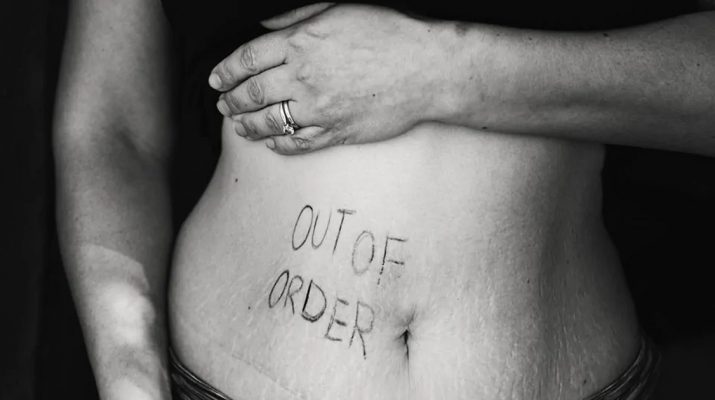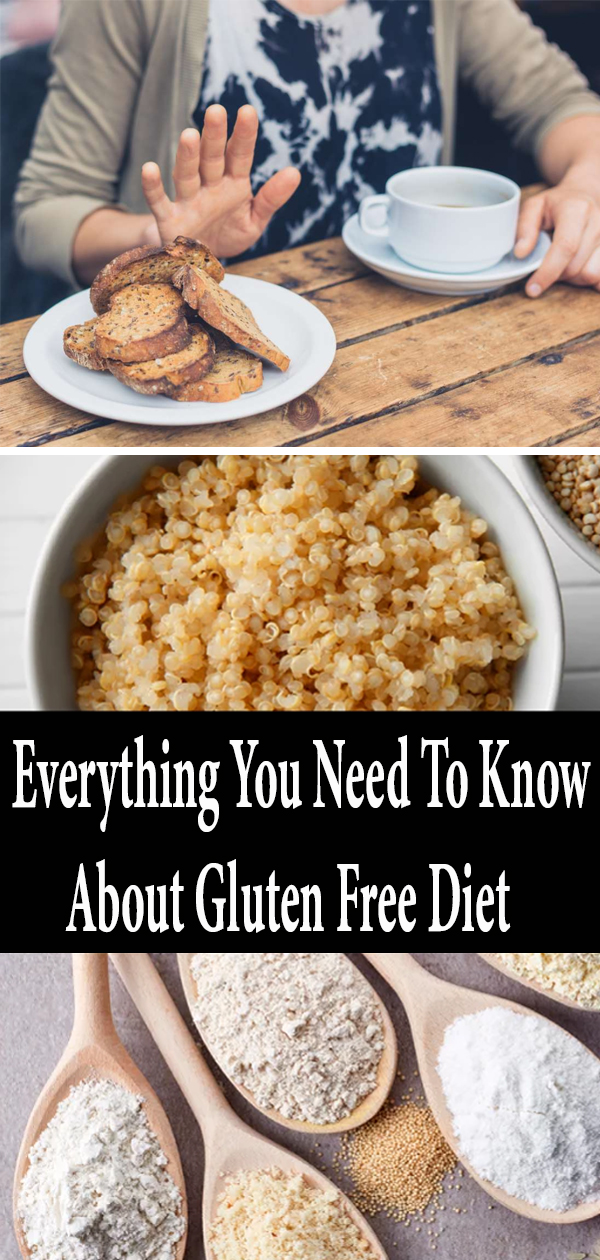So you have just learned, or decided, that you want to go gluten-free. This is an exciting time, right? After all, going gluten-free also means that you find freedom from stomach aches, skin issues, anxiety, and other emotional and mental issues.
Not to mention, you experience reduced cravings for those unhealthy products. In addition, you get to share everything you learn with your friends and loved ones. After all, the chances are that they should be on a gluten-free diet too.
But let’s say that this is not the attitude that you have towards this change in your life, at least not right now. Maybe you feel overwhelmed by what seems like an extremely limiting diet. Perhaps you worry about accidentally eating gluten. Maybe you are in denial or are not confident in your decision to go gluten-free.
Regardless, this article is for you. We discuss the gluten connection and health benefits of omitting it from your regular diet, as well as how to pick naturally gluten-free foods, and much more. By the end of the article, you will hopefully feel more excited and empowered to embrace this new chapter of your life.
What Is Gluten? Why Is Gluten Harmful To Some People?
Gluten is a protein found in wheat, rye, and barley. Unfortunately, in the United States, the wheat is modified to contain more gluten today than in previous decades. Therefore, while your grandparents might not understand the big concern about gluten, you feel it in your gut (literally). In addition, you may find that wheat products in other countries do not cause the same reaction as wheat products in the United States. This could be due to different agricultural practices.
Regardless, why do some people suffer while others do not? For several reasons. For instance, plenty of people who remain undiagnosed in fact do have celiac disease – about 97%, actually. This means that while they may not know that they are suffering, especially because they have none of the obvious symptoms, the body is still being harmed.
Celiac disease is an autoimmune disorder. When a person with celiac disease eats gluten, the protein destroys the villi (tiny hair-like structures that line the small intestine). This not only destroys the small intestine over time but it also stops the body from absorbing nutrients. Therefore, a lot of people who have celiac disease remain underweight and malnourished, even if they eat a hearty diet.
But, gluten can affect other people as well due to gluten intolerance and gluten sensitivity. Unfortunately, no specific scientific tests can currently confirm these conditions. This adds to part of the gluten controversy. Still, symptoms of such conditions include depression, stomach pain, skin issues, insomnia, anxiety, and more. Not to mention, gluten is connected with other health complications, as cited in “The Gluten Connection” by Shari Lieberman.
How To Be Gluten Free In A Pastry World
Luckily, the current trend in the food industry is becoming more friendly to gluten-free populations. With ancient grains on the rise and gluten-free fad diets abounding, you can likely dine out with friends while staying gluten-free. This said, the general public still remains relatively unaware when it comes to safe practices surrounding food prep, ingredients, and other products.
For instance, while oats are a naturally gluten-free food, the risk of cross-contamination is so huge that oats should be avoided UNLESS they are certified gluten-free. Take a look at the following foods you should gravitate towards while staying away from other options:
- Pick corn tacos over tortillas.
- Choose rice over bread.
- Ask for lemon and olive oil rather than standard restaurant salad dressings.
- Request that restaurant staff changes their gloves.
- Avoid Asian food unless you are 100% sure that the soy sauce has no gluten.
- Always check ingredients in packaged foods.
Opt for fruits and vegetables, whole grains, nuts, and meats.
This will surely cover all your bases. Always speak up and say that you cannot eat gluten, and clearly explain that even a crumb can cause a reaction. If in doubt, just do not eat the food.
Is The Gluten Free Diet Healthy?
The short answer: It depends. The label “gluten-free” can mean many different things. For instance, a gluten-free diet that consists of packages of sweets, bread, and waffles is comparable to a regular diet rich in carbohydrates and unhealthy sugars. On the other hand, a gluten-free diet that incorporates vegetables, fruits, whole grains, and good protein provides necessary nutrition. Though, you can achieve this same diet without going gluten-free.
Some studies say that people on gluten-free diets suffer a deficiency in nutrients like calcium and iron. While this may be the case, it is important to remember what would be happening if the person was eating gluten, especially if diagnosed with celiac disease. The body would absorb fewer nutrients, which would result in even more deficiencies.
All in all, a gluten-free diet can be just as healthy, if not more so, than the standard American diet (which varies as well). But, most people who go gluten-free also gradually grow aware of how to differentiate healthy and unhealthy foods. They start checking ingredients and labels. Not to mention, they will probably choose a piece of fruit over the cookie marked “gluten-free” at the buffet simply because of the risk of cross-contamination.
Health Benefits Of Going Gluten Free
You’ll experience numerous health benefits, both short and long term, to going gluten-free. Nails grow stronger, acne and skin rashes heal, and the stomach no longer feels bloated. In addition, you will feel stronger, and your general mood and emotions will grow more balanced.
Finally, a lot of foods that contain gluten are unhealthy already as they are loaded with sugars. Eating foods lower on the glycemic index, often the case when going gluten-free, can also help populations diagnosed with diabetes and those who identify as overweight. Some chronic diseases are cured, or improved, upon adopting a gluten-free diet. For instance, MS, Parkinson’s disease, and Hashimotos.
Once you learn how easy it is to be gluten-free, you will no longer think about what you are missing out on. Let’s face it, gluten-free food tastes better anyway. Read on for tips on making gluten-free foods, and some ideas to get you started.
Amazing Gluten-Free Foods To Make And Taste
Going gluten-free opens the doors for getting more creative in the kitchen. No longer do you confine yourself to one type of flour. Now you can use over ten different types of grains! Your bread can serve as a complete protein!
Eating naturally gluten-free foods will also help you to truly appreciate the cuisine of other cultures. For instance, Mexican food is a great option for people diagnosed with celiac disease. The main ingredients in the carb foods consist of corn, not wheat. Not to mention, rice is abundant. Same with Indian food and most Asian foods (minus the soy sauce). These cultural foods work with ancient grains, like quinoa, teff, and amaranth. Ancient grains just means that they have not been modified over the years, like wheat has.
A lot of these grains are complete in amino acids, like quinoa and buckwheat. This makes them excellent options for plant-based eaters. But let’s say you want more variety than just the grains, fruits, vegetables, and nuts that nature kindly offers. You want to bake!
Just because you must follow a gluten-free diet does not mean you cannot eat your cookies, bread, and cakes. The biggest change in the composition of these foods is that there is no longer a binding agent. Gluten acts as a glue in baking. So, using eggs (or chia or flax seeds) can provide a great alternative. A lot of gluten-free bakers will also use a combination of different types of flours. (A single flour can have an overpowering flavor.) A great combination to modify pumpkin bread, for instance, includes tapioca, brown rice, white rice, and coconut.
Take some time to experiment with different flour combinations and ratios. Once you find one that you like, life becomes almost “normal” again, if that is what you are striving for.
Embrace The Gluten Free Life
Gluten-free is surrounded by controversies, myths, and a host of misinformation. The health and wellness community continue to promote it, however. As a result, people new to the gluten-free life are sometimes very overwhelmed and lost. Suddenly they must check all the ingredients and say no to their favorite muffin.
For the most part though, once that door is permanently shut, a much brighter window opens. When this happens, eating gluten can seem like a death sentence, and you wonder why the whole world has not already gone gluten-free.
When it comes to sharing the news with family members, asking them to be supportive and even change their ways as well, you may be met with resistance. After all, there probably was a time when you did the same thing.
Do not fear. Change is gradual and the more that you learn in order to take care of your needs, the more positive energy gets put back out in the universe. Maybe, just maybe, you will provide the domino effect for your family and circle of friends, and what is more exciting that that?


